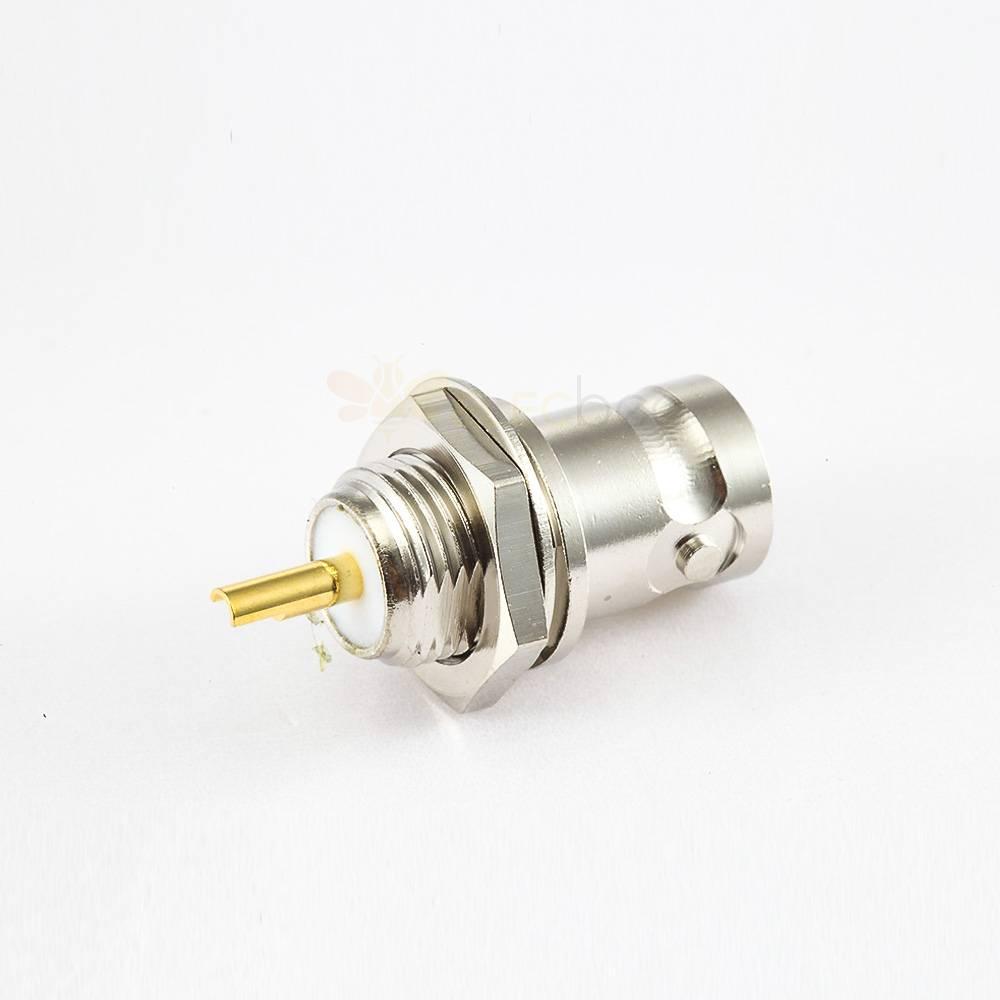Ah, elConector BNC! Abreviatura de Bayonet Neill-Concelman, este conector es el eje de muchos sistemas de comunicación, audiovisuales y de redes. Cuando las cosas se vuelven locas, como su cámara CCTV parpadeando como la luz de una discoteca o su equipo de RF actuando de mal humor, el conector BNC suele ser el culpable. Pero antes de empezar a arrancarse los pelos o culpar a toda la configuración, necesita saber cómo probar un conector BNC de forma eficaz. ¡Saltemos!
Herramientas que necesitarás
Cuando se trata de probar un conector BNC, no necesitas un arsenal de dispositivos sofisticados. Aquí está el conjunto de herramientas básico para comenzar:
- Multímetro: Se recomienda uno digital.
- Cables de prueba BNC: Puedes hacerlos tú mismo o comprarlos prefabricados.
- Alicates de punta fina: para algunos ajustes prácticos.
- Destornillador pequeño de cabeza plana: para orientar tornillos o pasadores pequeños.

Seguridad primero
Antes de embarcarse en su aventura de prueba, asegúrese de que todos los dispositivos conectados al BNC estén apagados y desconectados. No queremos ningún problema eléctrico, ¿verdad? Además, asegúrese de estar en un área seca y bien iluminada para una seguridad y visibilidad óptimas.
Comprender la anatomía del conector
Comprender la anatomía de un conector BNC no sólo le hará parecer un profesional sino que también le ayudará a realizar una prueba eficaz. El conector tiene una clavija central y un blindaje exterior. El pin transmite la señal mientras que el escudo sirve como conexión a tierra. Saber esto puede ayudarle a identificar dónde radica el problema, ya sea un pasador roto o un escudo defectuoso.
Continuidad de las pruebas
Paso 1: Preparando el Multímetro
Encienda su multímetro y configúrelo en el modo de prueba de continuidad, a menudo representado por un símbolo de diodo o simplemente "Cont". Este modo permitirá que el multímetro emita un pitido cuando detecte un circuito continuo, lo que le facilitará la identificación de cualquier falla.
Paso 2: prueba del pasador central
Inserte uno de los cables de prueba BNC en el multímetro. Ahora, coloque la sonda en el pin central del conector BNC. La otra sonda debe tocar el extremo correspondiente del cable. Si su multímetro emite un pitido, felicidades, ¡la clavija central está en buen estado! De lo contrario, es posible que deba reemplazar el conector o reparar el cable.
Paso 3: prueba del escudo exterior
Tal como lo hizo con el pin central, coloque una sonda en el blindaje exterior del conector BNC. La otra sonda debe tocar el otro extremo del cable blindado. Un pitido del multímetro es una luz verde, mientras que ningún sonido significa que es hora de investigar más a fondo.
Comprobando si hay pantalones cortos
A veces, un cortocircuito puede ser la amenaza fantasma detrás de todos sus problemas de BNC. Para probar esto, coloque una sonda en el pasador central y la otra en el protector exterior. Si escuchas un pitido, Houston, ¡tenemos un problema! Esto indica un cortocircuito y requiere atención inmediata.
La prueba del ojo humano
Nunca subestimes el poder de una inspección visual. A veces el problema es tan simple como un pasador doblado, una grieta en la carcasa de plástico o incluso corrosión en el conector. Un estudio visual detallado a menudo puede revelar problemas que las pruebas electrónicas podrían pasar por alto.
Consejos adicionales
1. Calibre su multímetro
Antes de comenzar sus pruebas, calibre su multímetro usando un conector en buen estado u otra referencia. Esto garantiza que sus medidas sean precisas.
2. Integridad del cable
A veces, es posible que el problema no esté en el conector BNC en sí, sino en el cable. Una prueba de continuidad a lo largo del cable puede ayudar a descartar este problema.
3. Aislar el problema
Si está tratando con varios conectores BNC, aísle cada uno para realizar pruebas y determinar cuál es el problemático.
4. Consulte las pautas del fabricante
Consulte la documentación del fabricante para obtener recomendaciones de pruebas específicas.
5. Mantenimiento periódico
Revise periódicamente sus conectores BNC para asegurarse de que permanezcan en buenas condiciones.
6. Pruebas avanzadas
Para quienes se sienten cómodos con herramientas más avanzadas, un osciloscopio puede proporcionar información más profunda.
7. Pruebas de calidad de la señal
Realice pruebas avanzadas, como medir la atenuación o la relación señal-ruido, si su multímetro lo admite.
8. Prevención de la corrosión
Utilice un limpiador de contactos para evitar la corrosión futura.
9. Mantenimiento de registros
Mantenga un registro de sus pruebas para referencia futura.
10. Consulta a un experto
En caso de duda, busque ayuda profesional.
Resumen: ¿Y ahora qué?
Si su conector BNC pasó todas estas pruebas con gran éxito, ¡tiene un conector campeón justo ahí! De lo contrario, podría ser el momento de considerar el reemplazo o la reparación. Recuerde, un conector BNC defectuoso puede comprometer todo el sistema, por lo que vale la pena invertir tiempo en pruebas exhaustivas.
Su viaje de despistado a conocedor de conectores ya está completo. La próxima vez que una pieza de tecnología decida irse de vacaciones espontáneamente, sabrá exactamente dónde buscar y cómo volver a ponerla en marcha. ¡Feliz prueba!






